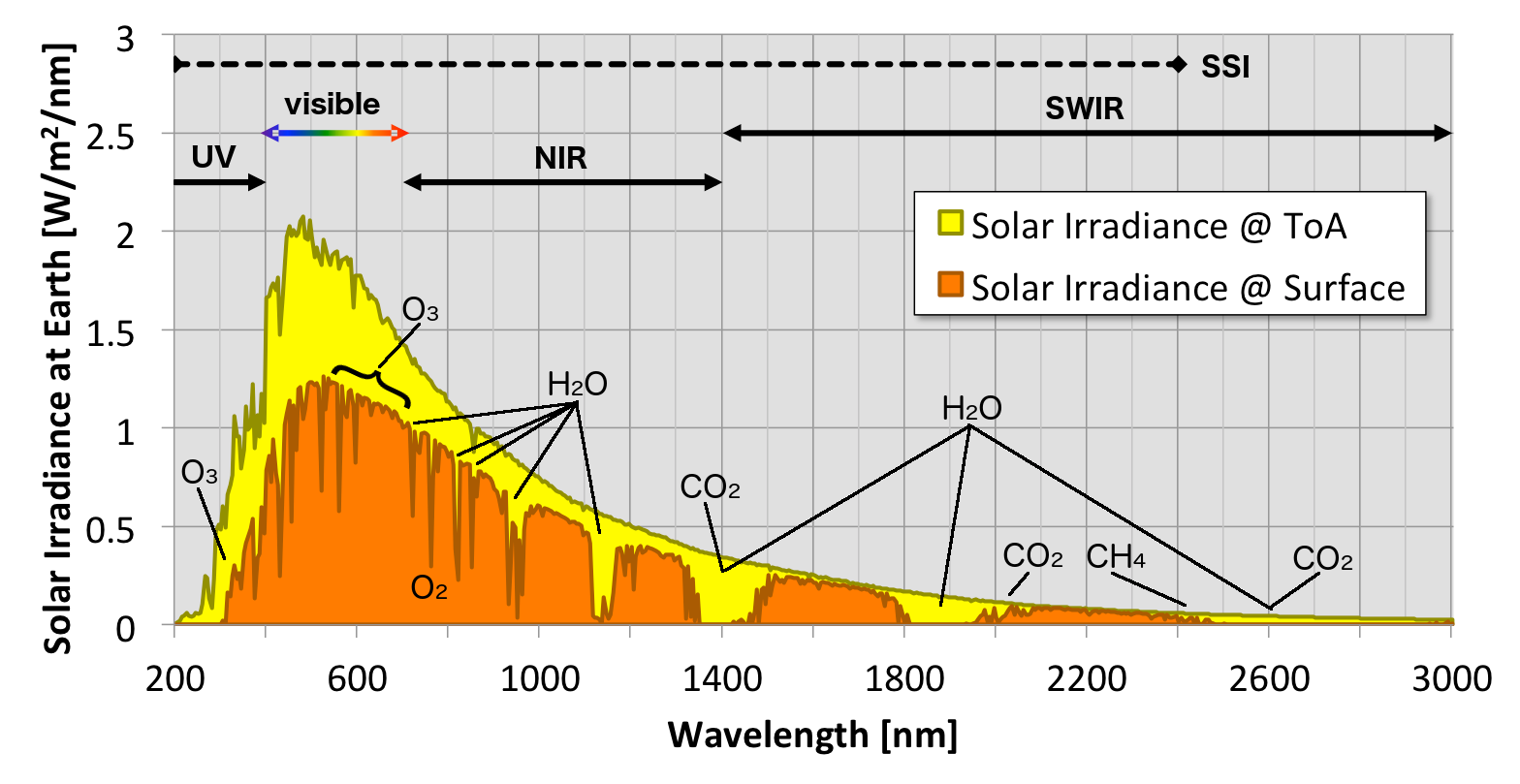
Solar Irradiance
Since the strength of solar radiation reaching Earth is not evenly distributed across the electromagnetic spectrum, in addition to the total solar irradiance (TSI), measurement of the spectral solar irradiance (SSI) is also essential, especially as it interacts with different materials and processes on the Earth’s surface and atmosphere in different ways. SSI will allow scientists to adequately understand and resolve the relationships between the different wavelengths of sunlight and the properties of the materials they interact with, and can serve as the basis for the retrieval of geophysical quantities of various materials and phenomena by remote sensing, as well as the calibration of many of the instruments used for such measurements. SSI measured at the top of the atmosphere (TOA) and integrated across 200–2400 nm represents 97% of the TSI.

Simulated spectral solar irradiance at the top of the atmosphere (ToA) and the Earth's surface. The different regions of the spectrum include: ultraviolet (UV), visible, near infrared (NIR), and shortwave infrared (SWIR). The range typically covered by SSI is indicated by the broken line at the top. The regions of spectrum where irradiance is absorbed by various atmospheric constituents are indicated, including: ozone (O3), oxygen (O2), water vapor (H2O), carbon dioxide (CO2), and methane (CH4). Graphics by Luke Ellison.
Prior to the advent of scientific observation satellites, astronomers and Earth scientists could not accurately measure the Sun’s energy input to Earth’s outermost atmosphere (i.e., the top of the atmosphere). This was because the variable absorption of sunlight by atmospheric gases, and scattering and absorption by clouds and aerosols, attenuate the “pure” solar signal as it is transmitted through the atmosphere. NASA pioneered realistic measurement of TSI from space in 1978 and has maintained a leadership role in this and other areas, although a number of other national and international agencies subsequently contributed their efforts to this important science.
The TSI reaching Earth per unit area was originally thought to be a fixed value and was referred to as the solar constant. Over the years, measurement of this quantity by various techniques yielded values that were quite different from one another. Satellite TSI measurements have enabled significant convergence in scientific consensus on the TSI value, which observations from the currently operational NASA Solar Radiation and Climate Experiment (SORCE) have determined to be 1,361 watts per square meter (W/m2). However, this value is not constant, but actually varies with time depending on solar activity, which is reflected in the counts of sunspots. These variations in TSI measurements occur every day, but when multi-day averaging is applied, a slower cyclic component emerges that is roughly aligned with the 11-year cycle of sunspot counts. Even the 11-year cycle of TSI variation is not constant. Therefore, uninterrupted long-term measurements of TSI are needed to keep track of its changes and implications for Earth processes over the short and long terms.
